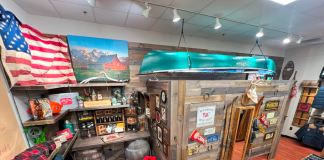Ducks Unlimited (DU) has achieved a conservation milestone with more than 14 million acres of habitat conserved in North America. The groundbreaking number is a cumulative accomplishment of the millions of DU volunteers and partners who have been a part of the organization over the past 80 years, said the organization.
“As we celebrate our 80th anniversary, this milestone is a fitting tribute to the hard work of each and every volunteer, partner and staff member who has contributed to our mission over the past 80 years,” said DU CEO Dale Hall. “If not for their dedication and commitment to conservation, this accomplishment would not have been possible.”
Such conservation gains did not come easily in the face of ongoing threats to waterfowl and their habitats. Although DU has successfully conserved more than 14 million acres of critical wetlands and associated habitat since our founding in 1937, wetland losses continue. In the last 50 years alone, the United States has lost more than 17 million acres of wetlands. As human populations grow, demands for clean and plentiful water for use at home and in many agricultural and industrial processes also increase.
Ducks Unlimited – working with partners – provides valuable, on-the-ground solutions that benefit waterfowl populations and maximize water resources through the dynamic natural functions of wetlands. In addition to providing habitat for waterfowl, wetlands naturally slow and store water to help recharge watersheds and aquifers, improve water quality through biological and physical processes and provide important wildlife habitat and recreational opportunities.
“DU’s policy efforts and the hard work of our volunteers, partners and staff will be more important than ever in the coming years,” said Dr. Tom Moorman, DU’s acting chief conservation officer. “DU, along with our waterfowl conservation partners at the state, federal and private levels, must continue with the cooperative progress that led to 14 million acres conserved, and expand that effort wherever possible to meet ongoing or new threats to wetlands and waterfowl habitat in North America.”








